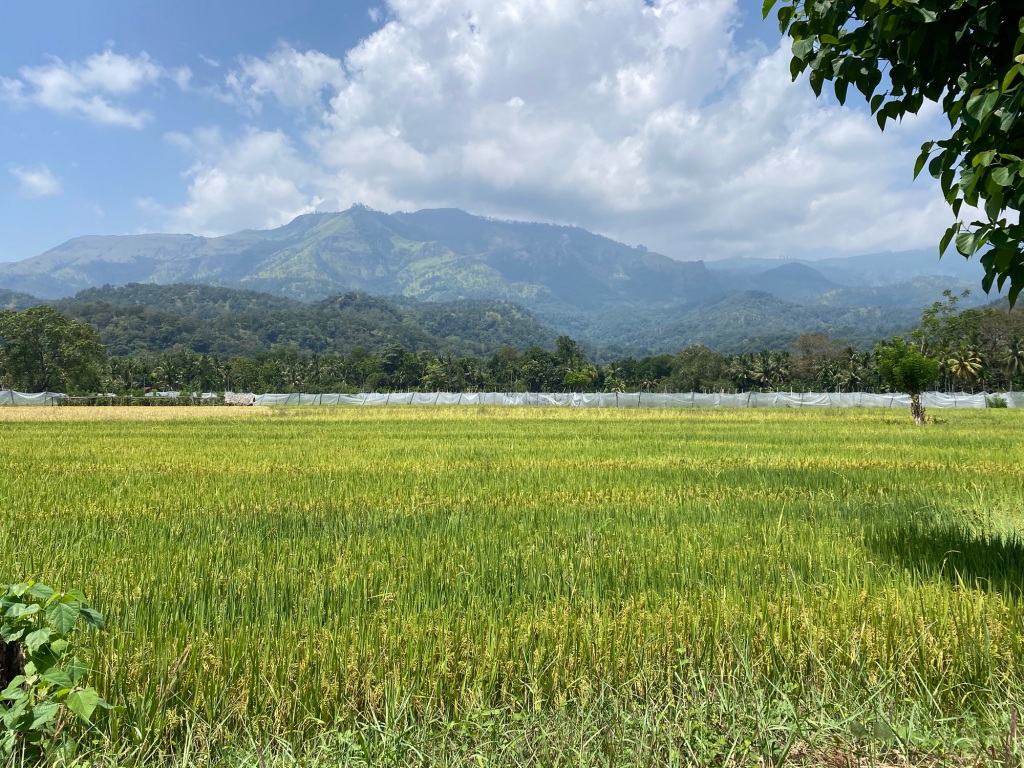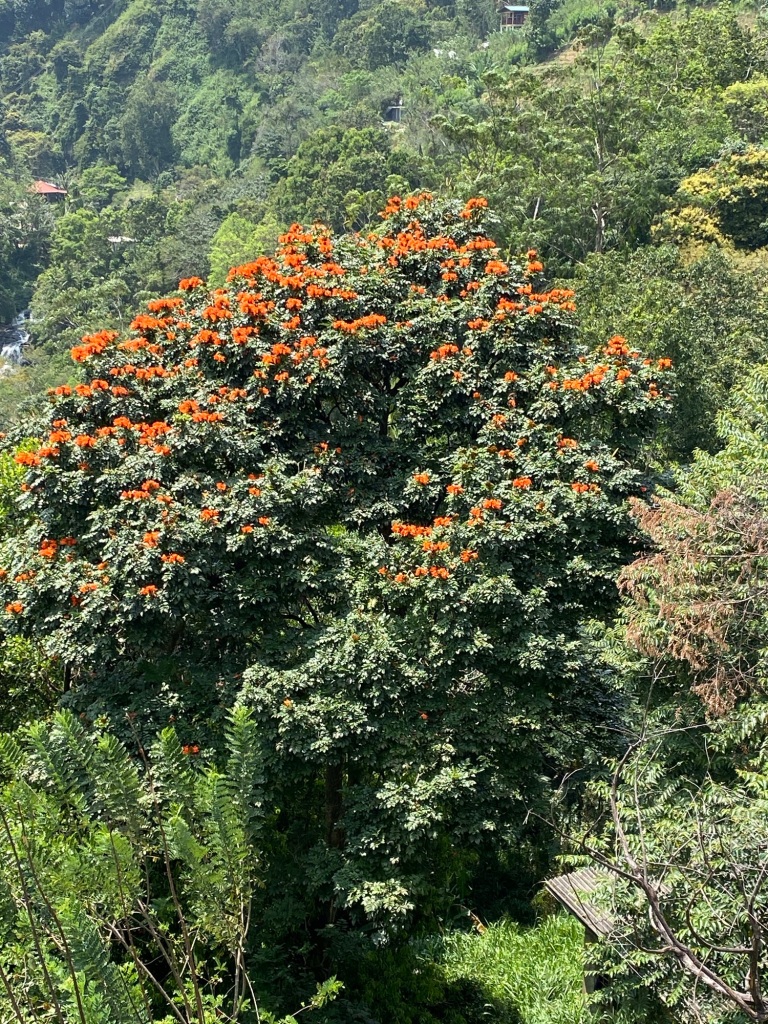Arriving in Sigiriya we were very disappointed in our home stay tree house at the Thick Forest. Having friends who recently stayed in a Tree House it did not measure up. It was a ramshackle mosquito haven, dirty and a little shaky. The mosquito sleeping nets had holes and were so old they smelled musty. To add insult to injury we paid more than the usual rate for this experience. The owner begged us not to write a bad review and brought out a book in which he has customers write “complaints” and “suggestions” It was full of unhappy customers but the last time we left a warranted bad review on a booking website we were harassed. Cutting our losses we checked out a day early and went to a lovely home stay with a pool for the same price per night and had a far better breakfast and dinner, it was spotless, had a great pool and the family was delightful. Don’t go to Thick Forest….stay at Sigiriya Peacock Homestay.


Climbing Sigiriya Rock Up To The Lion Fortress

Sigiriya is a town and and ancient city located close to the town. It is awesome, it is a once in a lifetime experience to be there and to climb the great rock. It is a historical and archaeological site that is dominated by a massive column of granite about 180 meters high. As a UNESCO world heritage site is very popular with both Sri Lankans and foreigners. Would you believe that one of the ancient kings built his palace on top of this rock and decorated its sides with colourful frescoes. It is a steep 1200 step climb to the top of the rock to see the remains of the palace, but it seemed like more in the intense heat of the day.
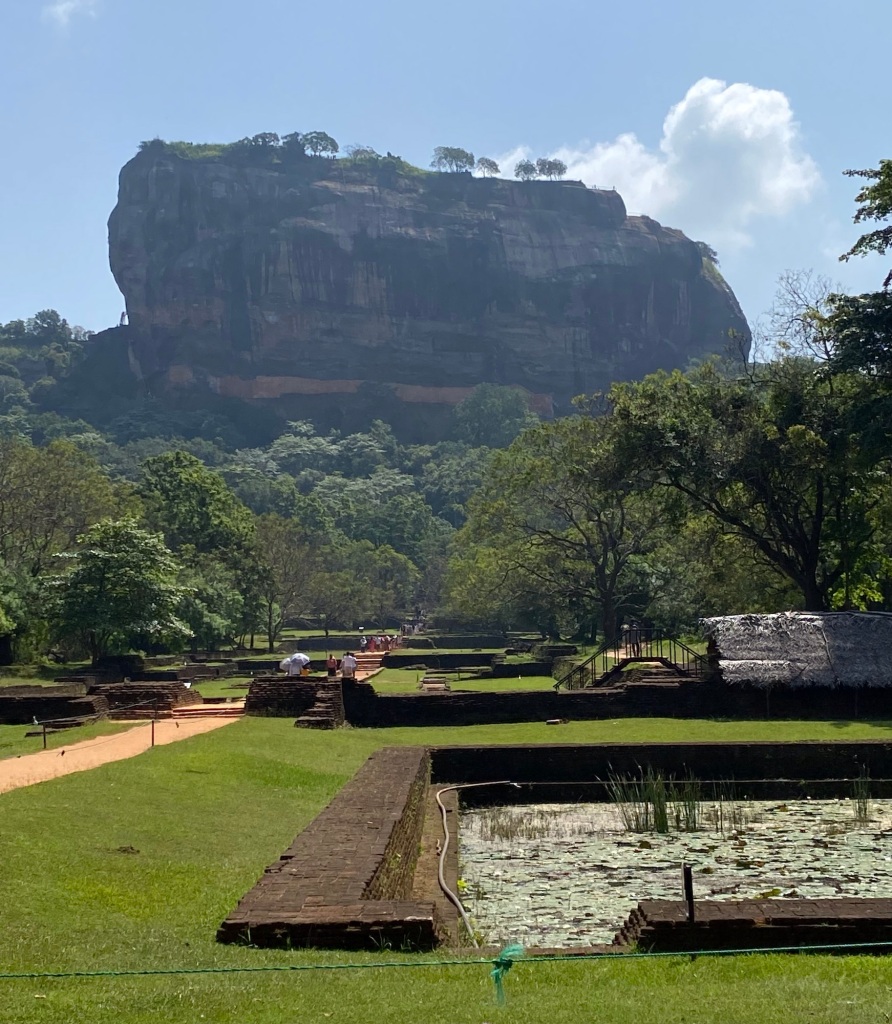
Entrance fees for foreigners are relatively high, about $35 USD, but not begrudged because the money goes to maintaining this marvellous place. You enter the Park and the first stop is a museum that details the long line of Kingdoms that existed here and the archaeological history of various digs that have taken place since the 1800’s. It is thought that Buddhist monks occupied the rock caves and shelters from as early as the 3rd Century BC. The grounds leading up to the Rock are beautiful and full of ponds and gardens and of course monkeys.

Caves


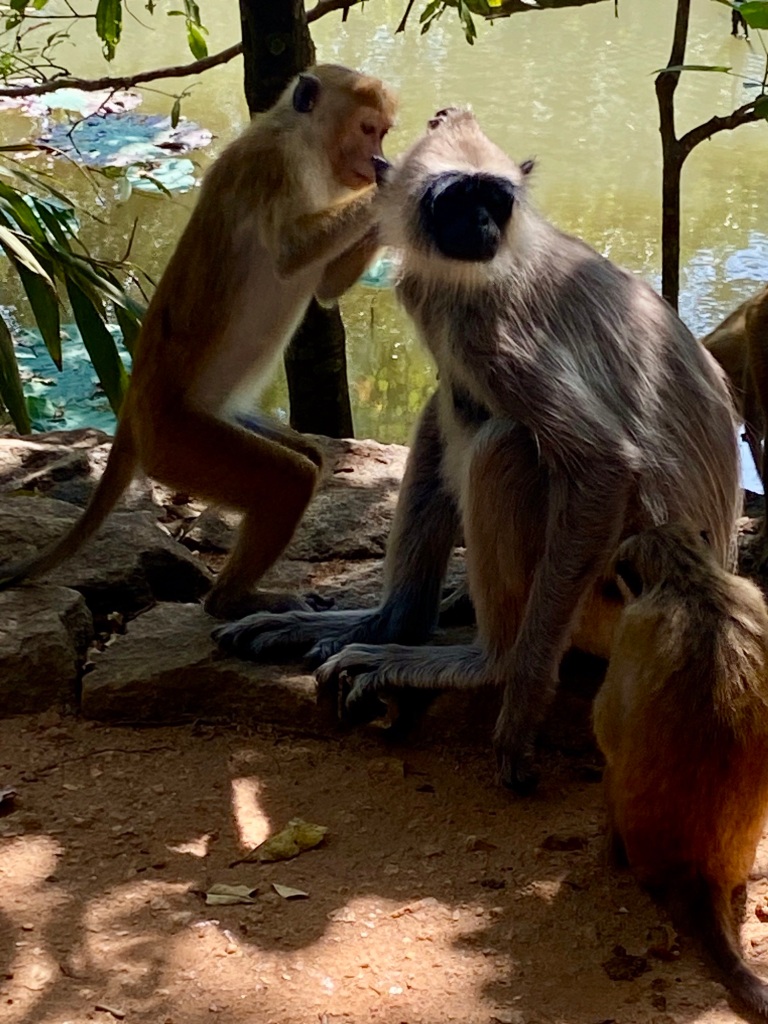
As you start the climb you see immediate evidence of the structures that existed at the foot of the rock. The first 900 or so steps are pretty steep and several stops help make the going easier. Taking your time is essential unless you are young and fit.

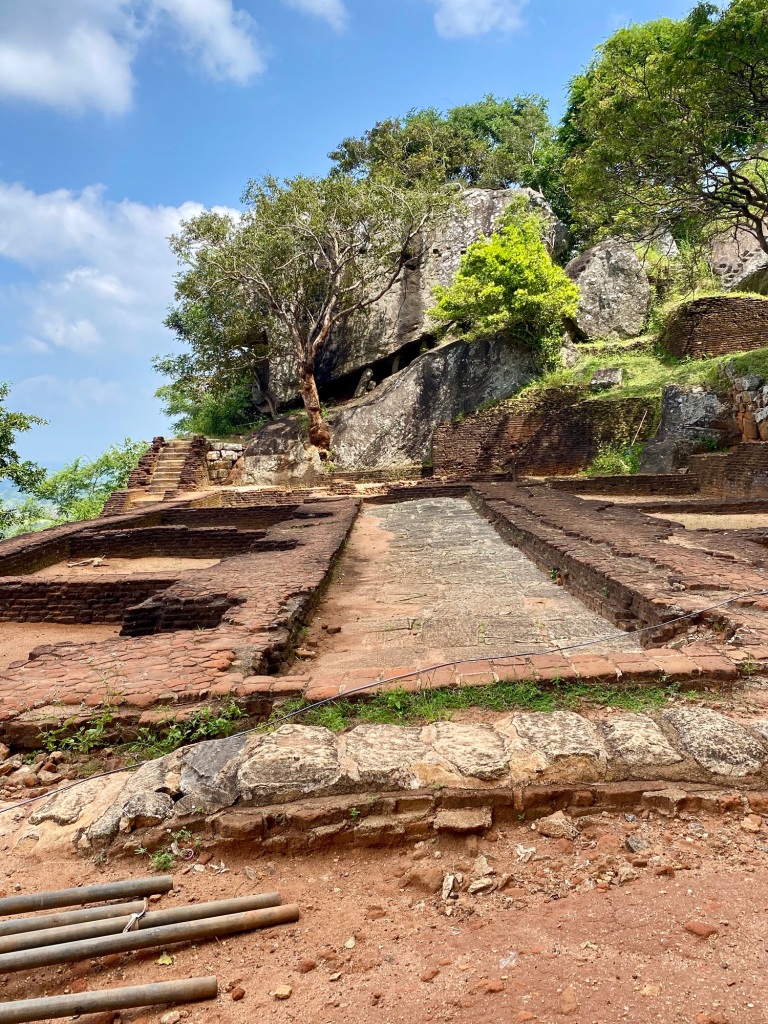



About half way up there is a gateway in the form of an enormous lion. Only the claws remain but imagine when the rest of the body and head were intact, it would have been impressive indeed. All this brick work covered with plaster and painted with frescoes is hard to imagine. The Lions paw is a rest stop for sure and there is filtered water for those who have run out. The views from this level are spectacular enough but only serve to fuel the desire to reach the top another 40 meters or so.

The last bit as seen below wasn’t too bad because people moved slowly up the steep steps and as you can see there was quite a crowd. There was no pushing or shoving and for the most part the crowd was Sri Lankan.


Reaching the top was epic for me. The 360 degree views were amazing and you could see that the King who had the palace built could easily survey his Kingdom for miles in every direction. Supplying the palace with the necessities of life was carried out by servants who climbed up and down the rock but the Royals who lived on top were carried up and down in a palanquin. Across from Sigiriya is another Rock, Pindurangala Rock and people with more time and energy will climb it as well.

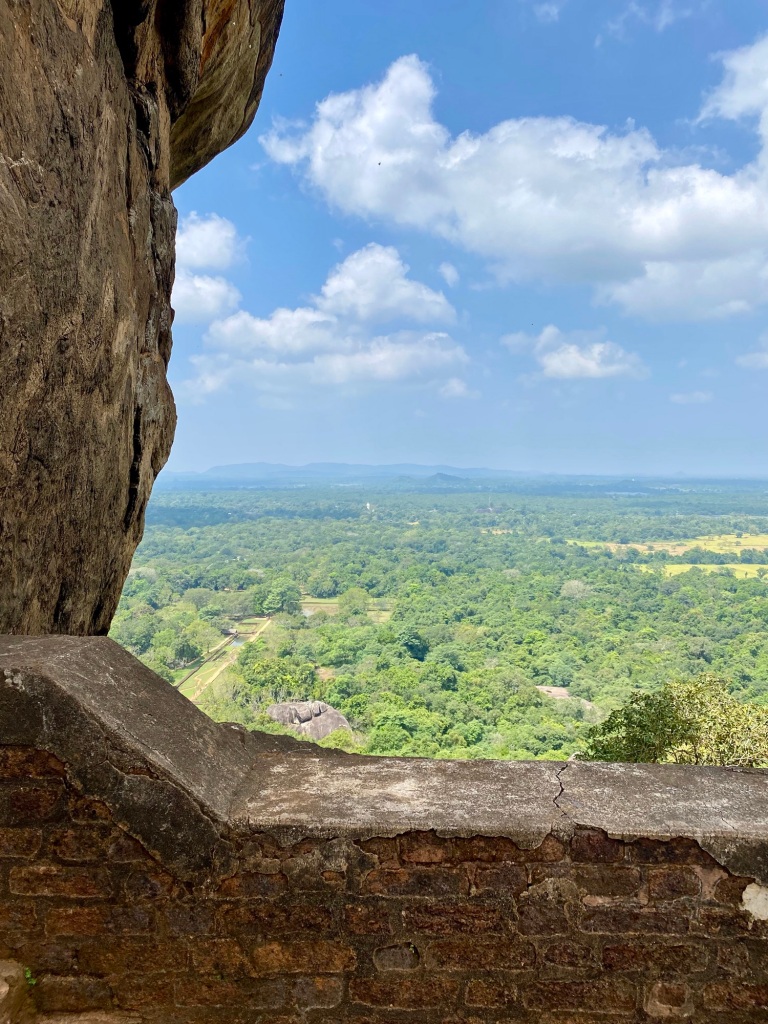



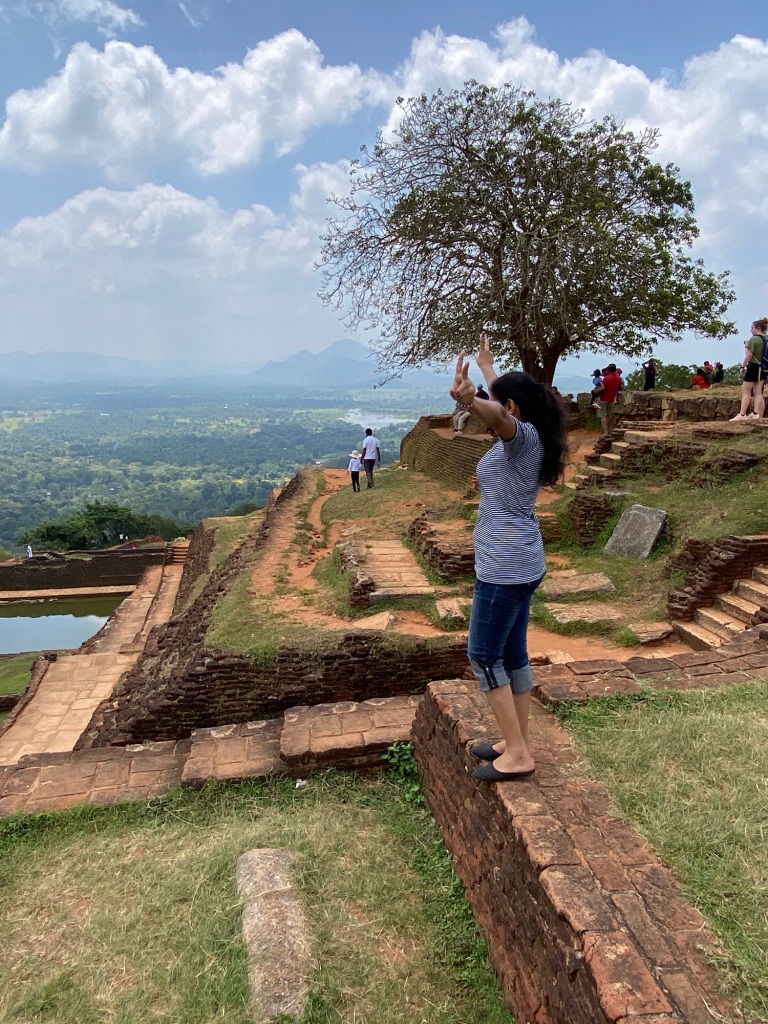
I couldn’t tell you how long it took to climb Sigiriya, the trek up was so engrossing that I completely lost track of time. I felt on top of the world when I got there and on the way down there was plenty of time to enjoy the views and admire the frescoes that adorned the rock walls. You haven’t been to Sri Lanka until you’ve been to Sigiriya!
Buddhist Caves
After a good night’s rest our next outing was to visit the Rangiri Dambulla Cave Temple another Unesco World Heritage Site. A pilgrimage site for 22 centuries, it is the largest and most well-preserved cave-temple in Sri Lanka. The temple is a series of five caves built into the wall of the rock mountain. The Temple has been transformed over the centuries and each of the caves or sanctuary has its own purpose and design. Altogether there are 157 statues important to the life and practice of Buddhism. It’s quite a climb to get up to the caves but nothing like Sigiriya, but like Sigiriya the rock carved stairs are uneven and sometimes very steep.










Girithale and Polonnaruwa
Staying in Girithale at the Agbo Hotel gave us quick access to Polonnaruwa another ancient city site that has undergone extensive archaeological activity.
The Agbo Hotel was one of our favourite stays and our rooms had great views of a lake and the surrounding forest and hills. It also had a large band of monkeys that frequented the property and we were asked to keep our balcony doors closed in the morning and when we were out for the day. However we decided to take our morning tea on the balcony as there was no evidence of monkeys in the vicinity. Enjoying the peaceful view we were startled to realise that some of the red faced nasty mean type macaques (remember they were entertaining in previous blogs) had snuck up on us and one of them leapt up onto our table and attacked our sugar bowl before we could even move. Greedily shovelling the sugar into his mouth with both hands and in between defending his right to it by baring his sharp pointy teeth and hissing at us, completely ignoring our attempts to shoo him away. We were forced to retreat inside but every time we moved he lunged at us, but with some sideways sidling and a chair as a means of defence we both made it safely back inside slamming the sliding door behind us. The monkey then took over the table and made short work of the sugar and the milk with the milk jug being the collateral damage in his rampage.
Polonnaruwa
We hired a Tuk Tuk through our hotel and had another great ride through the jungle and the towns on the way to Polnnuarwa.

Another UNESCO World Heritage Site, Polonnaruwa is a a huge ruin dating back to the 11th Century and was the capital city until the 13th Century. The area of the city is huge and it was much easier to see the different sections by Tuk Tuk and one ticket is all you need to get into each section. With hundreds of ancient structures, tombs, temples, statues and stupas it is well worth a visit.

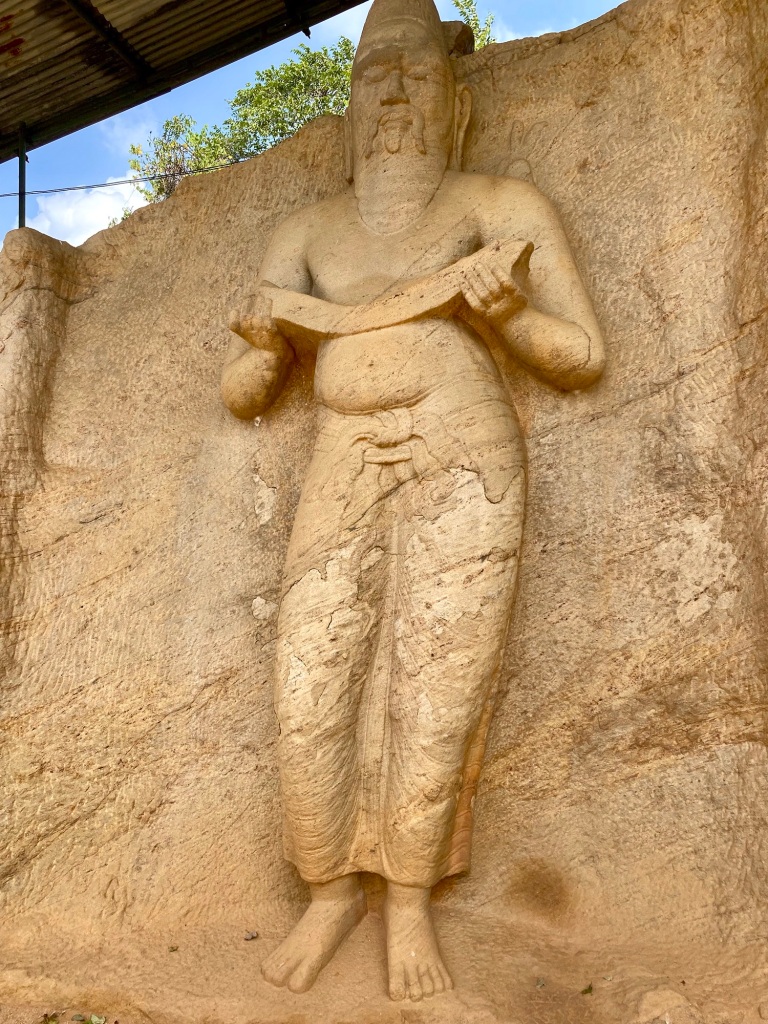
A prosperous city, well situated for trade and defence it was known as a garden-city and irrigation was used extensively in the ancient city. The city was eventually abandoned and overtaken by jungle after a series of civil wars and invasions.


The main event seems to be the Quadrangle as it is known, a huge collection of buildings in a small area, it is considered a holy site and proper dress (no bare knees or shoulders) is required for entry.




Cooking Lesson – A Definite Highlight
We loved our cooking lesson at Jaga Food Restaurant in Polonnaruwa. We Tuk Tukked it back to the restaurant with our now regular driver, Janaka Sudam. Our excellent teacher, Angelee, spoke English and her youngest two children were being sent to an English school so they had a pretty good grasp of what we were saying. It was a family affair with the two older sons and husband all in attendance. The second oldest son is studying Japanese and was doing his homework atone of the restaurant tables.
The clay pots that are used on the wood-fired ovens are seen all an over Sri Lanka. Roadside stands will have hundreds of pots of all sizes on display.

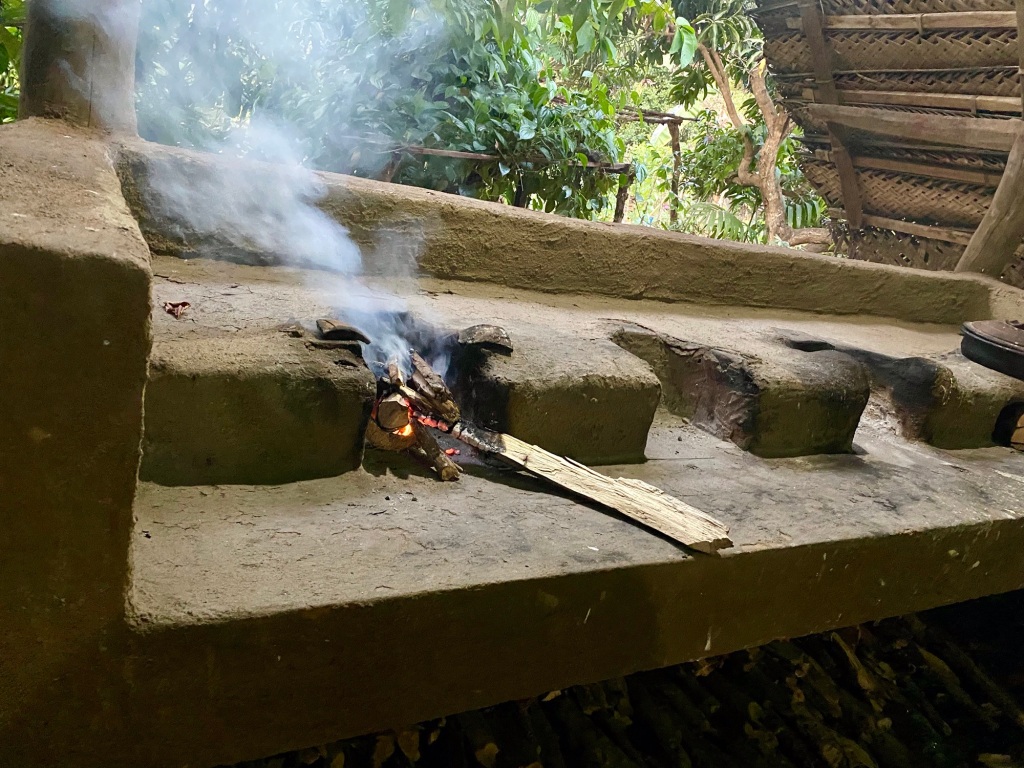






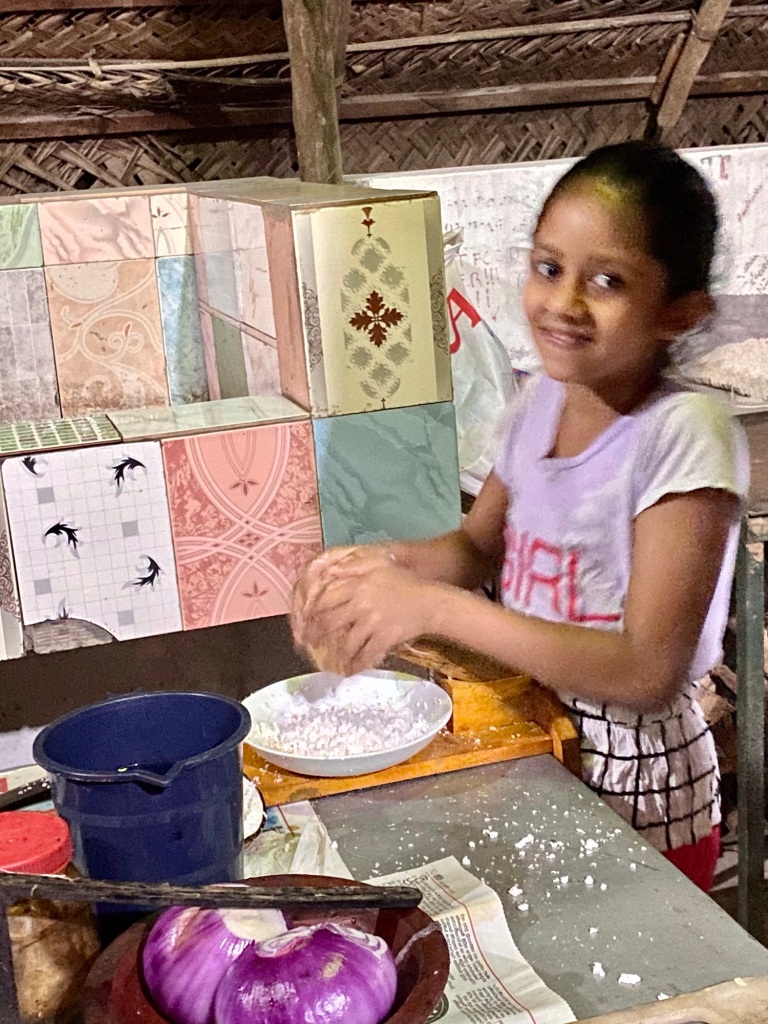





Of course when all was said and done we sat down to twelve dishes, Anjalee added rice and custard with treacle for dessert and we implored our driver to join us to help out, there were so many dishes. Another one of my favourite things to do in Sri Lanaka. Thank you Anjalee and family, we so enjoyed our time with you.


